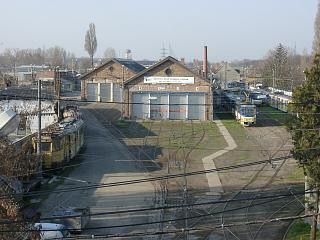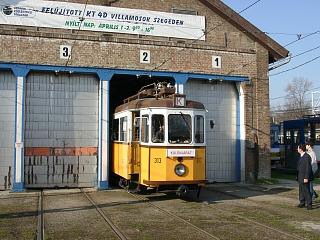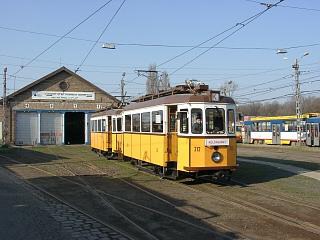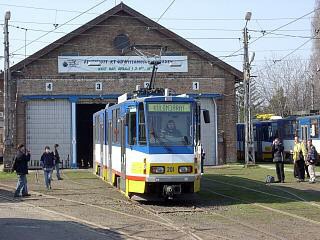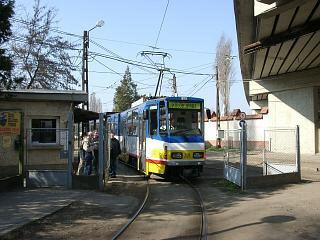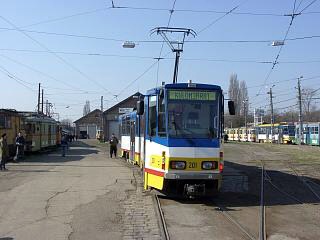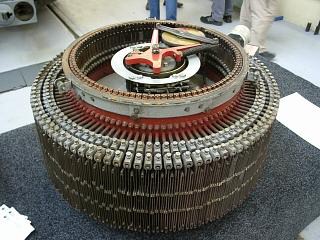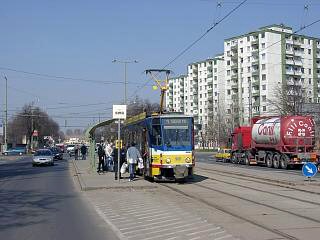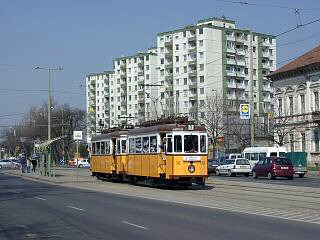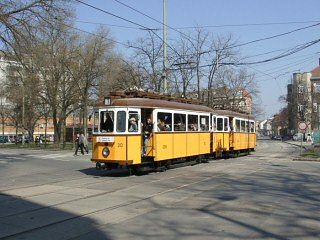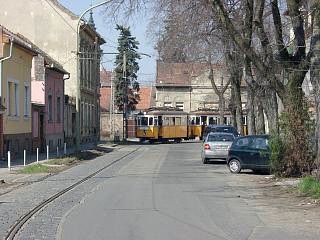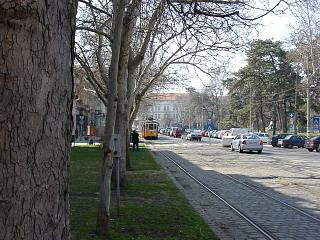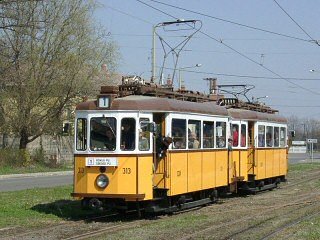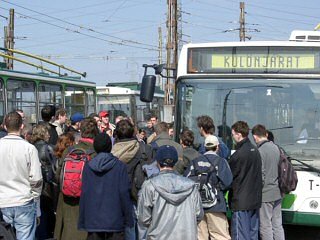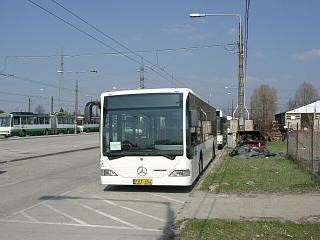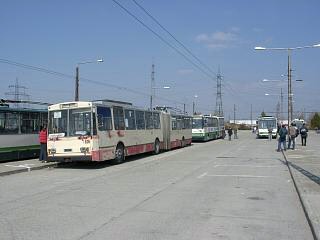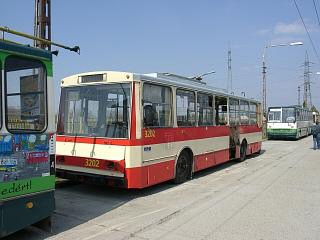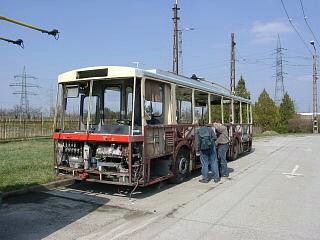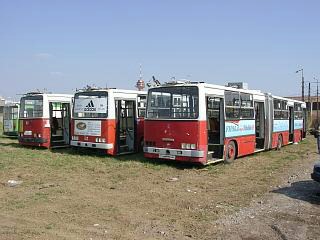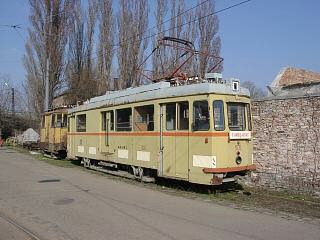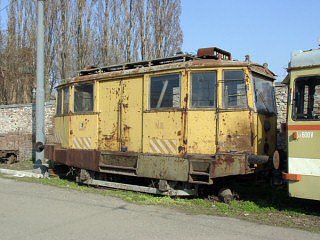SZKT- the transit operator of Szeged - and KTE - the Hungarian Scientific Association for Transport - organised a conference about refurbished/rebuilt Tatra KT4 tramcars on the 30th of March, 2005. This day was aimed at the professionals, but the next two belonged to the inquisitive public in the form of an open (public) day.
I arrived with my friends quite early, so I could take some photos of the tram remise before it got populated with urban transit fans.
Although the star of these two days was the KT4, since I took enough photos of them during my previous visits, I felt I should concentrate more on other vehicles, like the heritage twin-set 313+314.
We arrived before the programme started, so we boarded this oldtimer before it started out for the main railway station as a shuttle service.
We took the special bus service back to the tram depot, so we were already there when the historic tram arrived.
Okay, for the fans of the Tatras...
... here's...
.... three photos of number 201, the second ex-Potsdam KT4D to enter service.
In one of the workshop halls we found this Tatra (PCC) accelerator on display. And it was "operable": you pushed a button (substituting the pedal), it went around from one end to the other, you pushed another button, it went back.
I've always wanted to see how the PCC accelerator works, so I loved this demonstration!
And this is what the modernised KT4's receive: the Cegelec TV-Progress, and IGBT-based chopper system. I found it to be surprisingly compact: the container on the picture even contains the brake resistors!
There was a free special ride with a KT4, then with the heritage tram again. We wanted to take photos of it at various places in the city, so we started out earlier. We had to wait a bit, in the meanwhile I took this photo of a solo T6A2H tramcar.
And here's the oldtimer - a favorite of mine, because it came from Budapest.
Many of this type was still in use during my childhood, so it was a kind of a time travel for me :-)
This scenery reminded me of the one-track routes of Budapest that were closed in the early eighties.
Széchenyi tér, the center of the city.
You can see that the tram was remarbably well utilised (=full)!
The old tram coming back from the loop at Rókus station.
After a questions and answers session with the experts of SZKT we went over to the trolleybus depot, where the manager of the company showed us the vehicles and facilities, and shared his plans and thoughts about the future of electric public transportation with us.
The company bought 5 Mercedes Citaro buses recently. Two of them is likely to become a trolleybus in the future. The SZKT has already converted a Volvo bus to a trolleybus, so this would be no big undertaking.
A Skoda Tr15...
... and a Tr14. The company has a record of buying czech vehicles...
... so it's understandable that they bought three...
... "cannibalised" Skodas from Brno (CZ). One of them is already on the way of becoming usable again, but obviously it's not the on one the picture ;-)
Withdrawn: two ZIU-9 and three Ikarus 280T waiting to meet their fate.
After this, we returned to the tram depot, where I took a few pictures of the work cars. This is "SZ6", which started its life in 1897 as BKVT number 207 (type F), then became the prototype of the F1A series as BSzKRt number 1506 in 1938. It was rebuilt and renamed to 1520 in 1942, and then received a new car body in 1972. It was withdrawn by the BKV in 1984, since then its used in Szeged. What a life!
"SZ6" is the younger brother of the previous car: it was built as BSzKRt number 1531 in 1941.
The loco "M III" was built in Budapest in 1953 on the chassis of a goods waggon. It's out of use now, but they plan to renovate it as a historic item. I must say, Szeged has a pretty interesting collection of unusual vehicles!
And that's the end.
